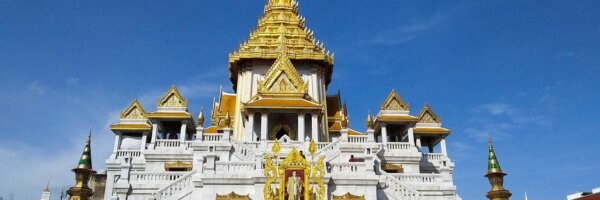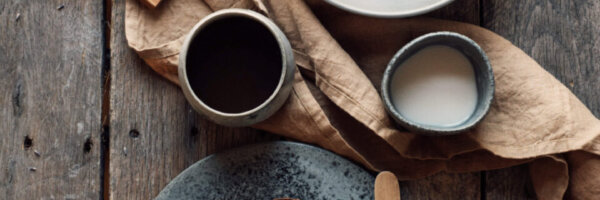
Phetchabun: The Switzerland of Thailand
Boom in domestic travelling within Thailand
Due to Covid-19 with the country lockdown, domestic travelling within Thailand has seen a major boom. The more popular destinations for local expatriates are the seaside resorts like Pattaya and Hua Hin, the sandy beaches of Phuket and Lanna heritage of Chiang Mai. Out of the 77 provinces in Thailand, there are a few that deserve a visit due to their distinguished geographical features or historical significance.
Generally referred to as “The Switzerland of Thailand” because of its high mountainous area; Phetchabun fits perfectly in the category. It is a province situated in between the Central, Northern and Northeastern regions of Thailand. By car, it takes around five hours from Bangkok with scenic highways (Highway No. 12) and good dual carriageway roads. Phetchabun has a number of mountain ranges cut through wide fertile valleys. In addition, the area is blessed with national parks, forests, lakes and waterfalls. It is more popular among Thai domestic travellers as the province is one of the closest areas to Bangkok that offers a cooler climate to escape the capital’s suffocating city heat due to its high mountains. For more adventurous foreign visitors, Phetchabun offers an attractive option.
The land of crops and food
The very name of Phetchabun means “the land of crops and food.” The province experiences a long and prosperous history and is embedded with rich tourism potential. Benefitting from the fertility of its soil, Phetchabun has always been a productive area. It centres on the Pa Sak River basin with mountain ranges running along both its Eastern and Western reaches. The mountains and forests offer a favourable and attractive climate. It is the meeting place of three regions of Thailand, the North, the Central plains and the Northeast. “The Switzerland of Thailand” is famous for its prized fruits and sweet tamarind.
Khao Kho National Park
Khao Kho is a very commercialised park with number of villages, hundreds of resorts and other premises through out the park. Khao Kho National Park is a very popular holiday destination among local and foreigner tourists. The park is popular for it’s cooler weather, morning mist covering surrounding valleys, impressive viewpoints, a huge wind farm, temples, and various types of gardens, waterfalls and number of other attractions. The main mountain Khao Kho is 1,143 metres in height. The other surrounding national parks are Thung Salaeng Luang National Park to the west and Phu Hin Rong Kla National Park a bit further North. Khao Kho was a base from which communist insurgents conducted their struggle from 1968 to 1982. Other interesting places include various viewing points, remains of guerrilla bases, a war memorial, an arms museum, and a royal palace.

Wat Phrathat Pha Sorn Kaew
Many visitors to Phetchabun will visit Wat Phrathat Pha Sorn Kaew which was established in 2004, with Phraphawanawachiraprakarn as the abbot of the temple. It is located at Pha Sorn Kaew; the Dharma practice hall is surrounded by scenic nature and tall panoramic mountain ranges. The origin behind the name “Pha Sorn Kaew” came from the time when many of the Tang Daeng villagers saw a glass marble levitating in the sky, then disappeared into a cave on top of a mountain peak. The villagers believed the glass marble to be a sacred object, and considered the location as a sacred place. They then called the mountain peak Pha Sorn Kaew, which literally translated as “the cliff that hides the glass”.
The original land occupied by the temple was a charitable donation by two benefactors, Phawinee and Urai Chotikhun who together contributed 40,000sqm of land to the temple to construct a Dharma practice hall for the monks and Buddhists. Later, many contributors had joined together to donate additional assets to the temple. The whole area now covers a total of 145,600sqm.
There are three key landmarks of Wat Phrathat Pha Sorn Kaew. They are Phrathat Pha Sorn Kaew Siriraj Thamma Naruemit Pagoda, Maha Viharn of the Five Buddha and Emerald Buddha Pavilion.

Phrathat Pha Sorn Kaew Siriraj Thamma Naruemit Pagoda
The pagoda enshrines the Buddha’s relics that was bestowed by Somdet Phra Sangkharat Chao Kromma Luang Wachirayannasangwon, the 19th Supreme Patriarch of Thailand. The area at the base of the pagoda contains a collection of Buddha’s teachings, and Dharma puzzle images; and provides a space for Buddhists to worship.
Phrathat Pha Sorn Pagoda was constructed with meticulous detail and magnificent design. The shape of the pagoda imitates 7 layers of lotus flowers to make merit to the Buddha. The brightly coloured pagoda is decorated with beautiful patterns made from colourful tiles, painted Thai porcelain (Benjarong bowls), ceramics, pearls, beads, crystals, and other valuable materials.
When viewing the pagoda up close, you will find glorious colours and patterns that have amazing details made from various materials that combined together into a large structure. We can learn many things from these patterns, it might be Dharma principles, Buddha’s teachings, impermanence, or anything that is hidden within the artworks and sculptures in front of you. Possibilities are infinite, depending on how you define these kaleidoscopic patterns with your own unique perception.

Maha Viharn of the Five Buddha.
As seen in the Buddhist scriptures, the five overlapping Buddha images are called the Five Buddhas. The large white Five Buddha statue stands spectacularly against green mountains and white fog, creating an unrivaled scene. The base of the Buddha statue is measured 41 metres in width and 72 metres in length. It stands at 45 metres in height, divided into 6 levels. Level 1 and 2 have been arranged as accommodation for worshipers, and the other areas are facilities used to perform religious duties such as worshiping, listening to Dharma, and for prayers.

Another important landmark is Sala Phra Yok Khiao (Emerald Buddha Pavilion). The airy pavilion for Dharma retreat is surrounded by large window panels, when inside; you could experience nature, the mountain’s lush greenery, and the flourishing garden with various kinds of fauna. The pavilion also enshrines the largest emerald Buddha statue in Phetchabun.

Best time to visit
According to Wannarak Siripanich, Managing Director of Kiri Pura Resort, “June is a good month to visit Phetchabun to experience the fog cloud. During the heavy rainy season from July to September, visitors can encounter every morning waking up to the magnificent seas of mist and cloud.” Further added, “October is also a favourable time as it is the end of the rainy season, so the temperature starts to be cool and pleasant. For those tourists who enjoy the cold, December and January are the best. The temperature drops to 10 degrees in the morning.”
To conclude, Phetchabun is truly a province that befits its name. “Phetcha” is a Sanskit word meaning “diamond” and “bun” means “perfect” which combination becomes “Perfect Diamond”. During this pandemic time of domestic travelling only, Phetchabun poses a perfect destination for a long weekend stay!







